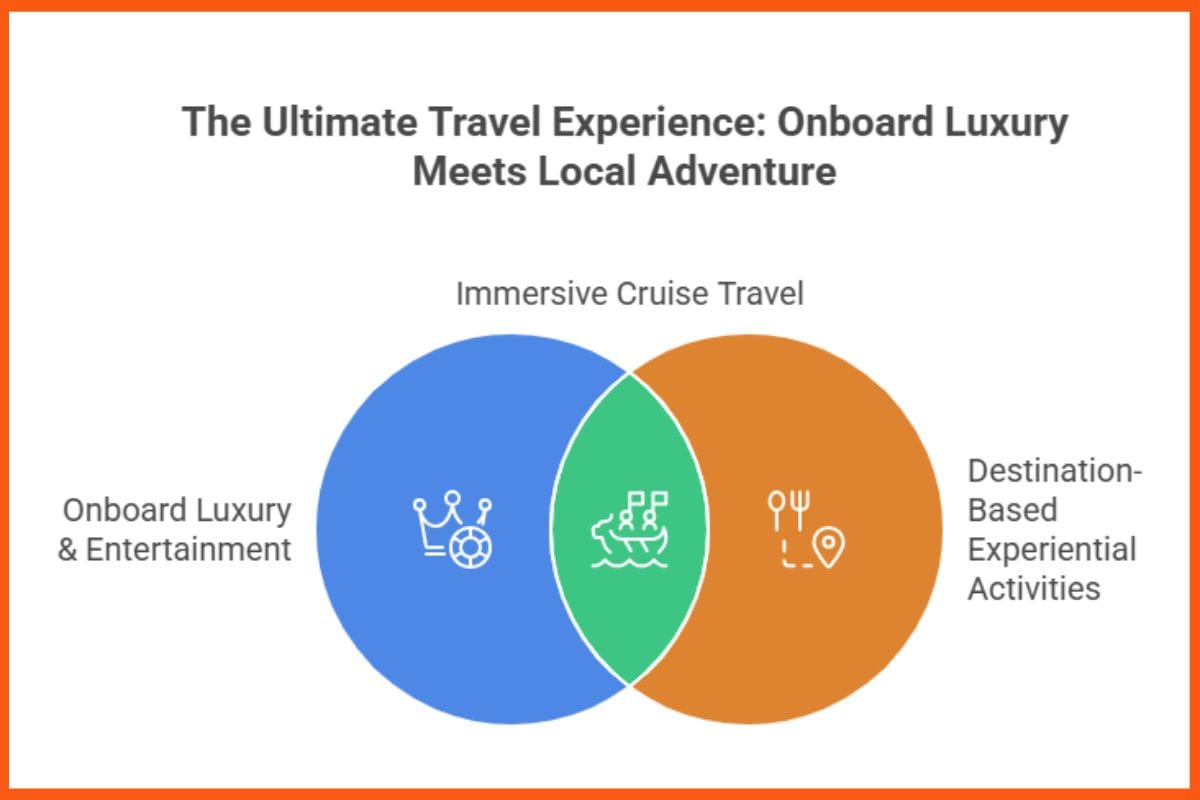This article has been contributed by Akansha Agarwal , Co-Founder & Chief Marketing Officer, Int2Cruises
More Indians are now looking at cruises as a serious vacation option. Rising incomes, better awareness, and a wider choice of routes are making a huge difference. Cruise operators have also realised that the Indian traveller wants short, value-packed trips.
India has over 7,500 kilometres of coastline, 12 major ports, 200-plus minor ones, and 110 navigable waterways covering 20,000 kilometres. It is a natural setting for cruise tourism. For years, that potential sat untapped.
The Cruise Bharat Mission
Cruise Bharat Mission
The government has now started to act. The Cruise Bharat Mission, launched in 2024, is the centrepiece of this plan. The goal is to double annual cruise passengers, from 4.71 lakh in 2024, to close to a million by 2029. River cruise terminals will go up from 50 to 100. Sea cruise terminals will rise from 2 to 10. Marinas will increase from one to five. These changes will cut waiting times, improve passenger handling, and make India more appealing to global cruise operators.
And it is not just about sea cruises. The mission also looks at river cruises, harbour circuits, and island routes. Kerala’s backwaters, Ganga cruises, and the Andamans are already drawing interest, but with better facilities, they could attract far more domestic and foreign travellers.
Interest Is Rising, But Numbers Are Small
India’s outbound travel market is growing fast — about 11% a year — and spending could hit $55 billion by 2034. Nearly 77% of Indian cruisers prefer short trips of three to five nights, which is exactly what Asian cruise hubs already offer.
Yet, only 4.71 lakh Indians went on a cruise in FY2024. That is tiny compared to the potential. One big reason is the booking process. Flights and hotels can be booked in minutes, but cruise bookings are still clunky. Most travellers have to depend on agents, with little clarity on pricing or options.
This is slowly changing. With the help of digital platforms, travellers can seamlessly research itineraries, compare prices, and book online. For cruisers, this makes a big difference — planning becomes less intimidating and far more transparent.

A Strong Economic Case
Cruise tourism is not just about leisure. It has a wide economic footprint. By 2030, the sector is expected to add INR 35,500 crore to the economy and create around 2.5 lakh direct and indirect jobs.
Cruise arrivals translate into customers for restaurants, passengers for taxis, and sales for artisans. The government also earns through port charges, passenger taxes, and customs duties. Tourists spend on city tours, meals, and shopping, which gives a direct boost to local businesses.
When ports get modern terminals and smoother transport links, it is not just tourists who benefit. Local people also gain because travel becomes faster, public facilities improve, and cities become better connected. Daily commutes get easier, and residents enjoy the same upgraded infrastructure that was originally built for visitors. In fact, the small and medium businesses in nearby areas also find new opportunities through these developments.
Global Cruise Lines Are Watching

International operators are showing interest in the deployment in Indian waters. For Indian travellers, these deployments would bring global experiences to our backyard. Indian travellers, particularly millennials and Gen Z, value experiences more than material purchases. This is because cruises offer facilities like spas, casinos, movie theatres, and waterslides, along with experiences like cultural performances, thus offering something for all age groups.
The real appeal, however, lies in the diverse shore excursions that offer authentic immersive experiences that include exploring spice markets and organic farms in Goa, canoe rides through Kerala’s backwaters or rides through coastal villages. Those with an appetite for adventure can opt for activities like snorkelling and scuba diving in the crystal-clear waters around Lakshadweep’s Agatti Island, coral reef exploration, and wildlife spotting in destinations like the Sundarbans. Cruising thus offers a combination of onboard luxury and destination-based experiential activities, making it the best choice for all travellers.
A Vision Taking Shape
The government’s Maritime Vision 2030 ties in closely with the Cruise Bharat Mission. The goal is to build a strong and sustainable maritime sector where ports, tourism, and logistics grow hand in hand. The emphasis is on expanding capacity for the future while making sure the environment is protected.
By 2035, India could rise and emerge as South Asia’s main cruise hub. This would mean more money from tourism, steady job creation across different sectors, and better business for local communities. It would also give the country a stronger place on the world stage, proving its ability to build a modern and sustainable cruise industry.
What Must Happen Now
The potential is huge, but what really counts is follow-through. Terminals need to be ready on time. Policies should stay friendly for investors. And cruise operators have to make booking easier while offering experiences that match what Indian travellers are looking for.
If government and industry work in sync, cruises could go from niche to mainstream within the decade. That would boost the economy, create jobs, and give Indians a new way to explore their own coastline and rivers.

